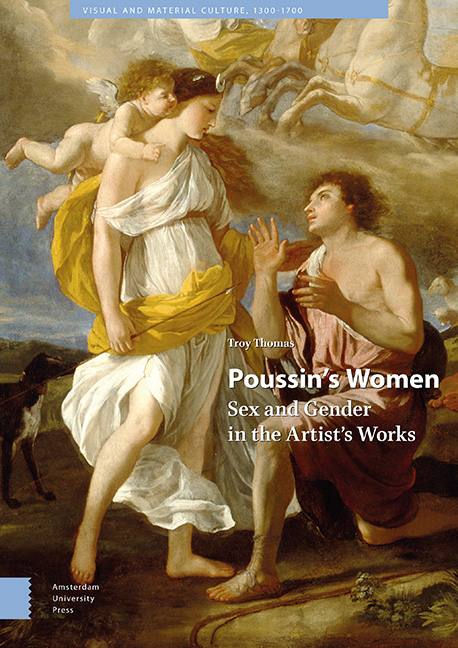Book contents
- Frontmatter
- Contents
- List of Illustrations
- Acknowledgments
- Part I – Violence and Virtue in Poussin’s Representations of Women
- Part II – Poussin’s Women—Cultural and Social Frames
- Part III – Paintings and Drawings
- 1 Predators
- 2 The Lustful—Triumphant, Impulsive, Spying, Conquered
- 3 Lovers—Genuine, Controlling, Unrequited, Jealous
- 4 Killers, Transgressors
- 5 Victims I—Killed, Assaulted
- 6 Victims II—Voiceless, Deceived
- 7 Heroines, Great Ladies
- Conclusion
- Bibliography
- Index
Part I - – Violence and Virtue in Poussin’s Representations of Women
Published online by Cambridge University Press: 20 November 2020
- Frontmatter
- Contents
- List of Illustrations
- Acknowledgments
- Part I – Violence and Virtue in Poussin’s Representations of Women
- Part II – Poussin’s Women—Cultural and Social Frames
- Part III – Paintings and Drawings
- 1 Predators
- 2 The Lustful—Triumphant, Impulsive, Spying, Conquered
- 3 Lovers—Genuine, Controlling, Unrequited, Jealous
- 4 Killers, Transgressors
- 5 Victims I—Killed, Assaulted
- 6 Victims II—Voiceless, Deceived
- 7 Heroines, Great Ladies
- Conclusion
- Bibliography
- Index
Summary
Abstract
Part I analyzes the themes of Poussin's paintings and drawings from a gender studies perspective. This section critically examines his depictions of both virtuous and evil women through the lens of the gender constructions of his time. Poussin's supposed stoical approach to art is critiqued from a gender studies viewpoint. His art calls for reevaluation in light of current critical approaches to gender studies and art history.
Keywords: Violence, Virtue, Gender Studies, Stoicism, Criticism
We might say that Poussin's paintings and drawings are built around a contradiction. On the one hand, they often present scenes of the most desperate human circumstances: death (of Pyramus and Thisbe, Echo and Narcissus, Adonis, Eurydice, the children of Medea, Virginia, Sapphira, the mortals struck down in the Realm of Flora); sexual predation (Endymion pursued by Diana, Cephalus harassed by Aurora, the attempted rapes of Daphne and Syrinx); and revenge (Diana once more, avenging Orion, or slaying Chione, Mercury turning Aglauros to stone, the effects of Juno destroying Semele in the Birth of Bacchus). On the other hand, his paintings give rise to the most exquisite pleasure, in the geometry of their construction, the beauty of their color, and, for some, their evocation of a lost golden age. These contradictions fixed around destruction on the one side and formal refinement or allure on the other are never resolved, but held in concentrated tension in his works. Disregard for the negative side of this equation has led to interpretations that underestimate the power of the destructive forces presented in his art. For example, it has long been claimed, starting with André Félibien (1619-1695), the painter's friend and biographer, that even when he depicts scenes with his protagonists locked in conflict, Poussin's canvases are always harmonious. Felibien asserts that Poussin's thoughts are always ‘pure and unclouded […] Everything [in his work] seems natural, easy, suitable and agreeable’. Such a characterization of Poussin as a ‘pleasant’ artist undermines the expressive power of his scenes illustrating perilous discord.
- Type
- Chapter
- Information
- Poussin's WomenSex and Gender in the Artist's Works, pp. 23 - 52Publisher: Amsterdam University PressPrint publication year: 2020

